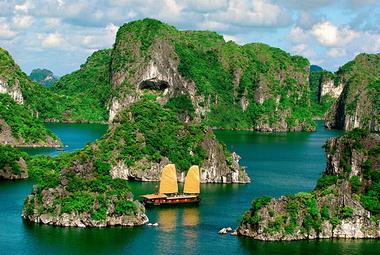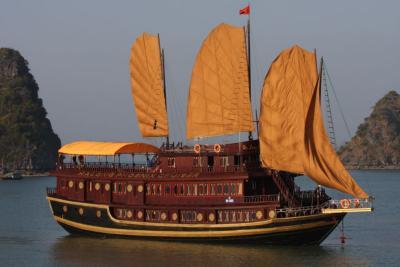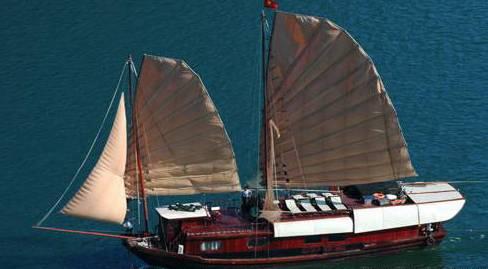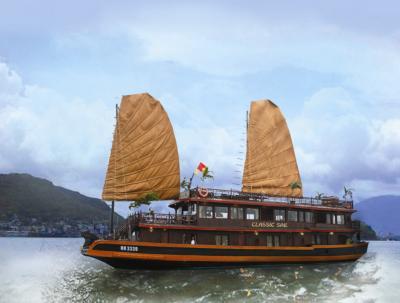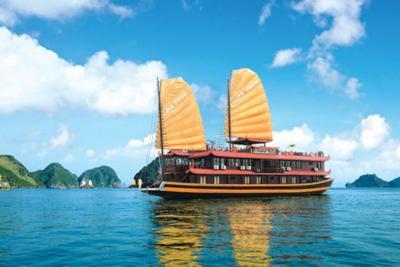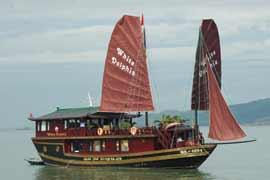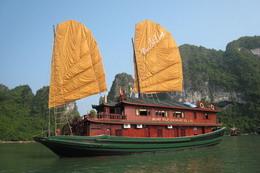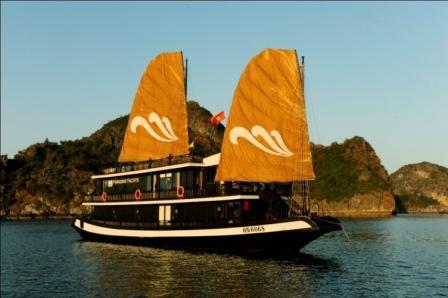Climate change poses more threats to southern tip
Published: 05/02/2009 05:00
| Lookatvietnam – The WWF Greater Mekong Program has called for a range of approaches to be taken for Ca Mau to counter climate change as its impacts are predicted to become more serious for the country’s southernmost province in the coming years.
The Ca Mau study that the program released on Tuesday indicates that the impacts of storms and sea-level rise (SLR) will likely pose serious threats, and that current management initiatives are insufficient to meet this emerging risk. Therefore, the study proposes integrated water management strategies including hydraulic works to control the volume, quality and movement of water within enclosed areas, and consideration of climate change in planning future agriculture and aquaculture development. The study also recommends provincial planners to maintain or restore dunes, wetlands, and coastal forests as a way to buffer against storm surges, improve water quality, and regulate water flow. Tuesday also saw the program releasing a study on the impact of climate change on Thailand’s province of Krabi, where a shorter rainy season leading to water scarcity is seen as among the major challenges for the future. The program carried out the studies in collaboration with local partners including Vietnam’s Southern Institute for Water Resources Planning last year to help governments assess climate change vulnerability and understand the implications for economic development. The program chose Ca Mau and Krabi provinces because of their proximity to the sea and the dependence of their economies on ecosystem services to provide examples of climate change adaptation and mitigation strategies appropriate for the entire Greater Mekong region. The studies stress that many steps need to be taken, not only at the provincial level but across the Greater Mekong region, to ensure a more secure future for the region’s residents, particularly those living in coastal areas. The program also calls on both Krabi and Ca Mau to improve their current strategies for dealing with natural disasters. The Ca Mau study says the province has many small villages scattered along rivers and coastlines, leaving a significant proportion of the rural population isolated and at greater risk from SLR and extreme storm events. International efforts are also important to keep the Mekong River free flowing. “The ecological and agricultural systems in the Mekong Delta are reliant upon the natural flow of water and deposition of sediment; changes upriver that block this natural sediment flow, such as the construction of hydropower dams, will exacerbate SLR impacts while reducing agricultural productivity in the floodplain,” the study explains. Jonathan Cook, senior program officer for WWF’s Macroeconomics Program, said in the statement that climate change created an additional set of challenges in terms of ensuring sustainable development within coastal areas of the Mekong region. Cook said WWF also urged governments in the Greater Mekong region to explore emergency evacuation options, develop sound water management strategies. It is also crucial to improve understanding at local and basin-wide levels of the role of forest ecosystem services in adaptation, and integrate these into relevant development plans to help reduce the vulnerability of people and biodiversity to climate change impacts. The Greater Mekong region comprises Cambodia, Laos, Myanmar, Thailand, Vietnam and Yunnan Province of China. This region is life source to more than 300 million people. WWF is working to help conserve 600,000 square kilometers of the world’s most biologically diverse but seriously threatened forests and rivers within the region. The region is home to some 20,000 species of plant, 1,200 bird species, 800 species of reptiles and amphibians, and 430 mammal species, including critically endangered species. VietNamNet/SGT |
Provide by Vietnam Travel
Climate change poses more threats to southern tip - Sci-Tech - News | vietnam travel company
You can see more
- WIPO supports Vietnam to develop national strategy on intellectual property
- Viettel deploys 4G nationwide
- Wind power in Vietnam: three problems may shrink investors back
- Online sellers & buyers swindle each other
- Vietnam’s first remote sensing satellite launched after delay
- Vietnamese big guys vie with one another to distribute “eaten Apple”
- Broadcasters provide services below cost prices to attract more subscribers
- Vietnamese companies try to make money with garbage
enews & updates
Sign up to receive breaking news as well as receive other site updates!
- Banh Đa Cua - a traditional Hai Phong specialty
- Exploring Lai Chau cuisine
- Hanoi ranked top 3 cuisine in the world in 2023
- Beautiful resorts for a weekend escape close to Hanoi
- Travel trends in 2023
- In the spring, Moc Chau is covered in plum blossoms.
- The Most Wonderful Destinations In Sapa
- Top 3 Special festivals in Vietnam during Tet holiday - 2023
- 5 tourist hotspots expected to see a spike in visitors during Lunar New Year 2023
- How To Make Kitchen Cleaned
-
vietnam travel
http://www.vietnamtourism.org.vn " Vietnam Tourism: Vietnam Travel Guide, Culture, Travel, Entertainment, Guide, News, and...
-
Vietnam culture, culture travel
http://travel.org.vn " Vietnam culture
-
Vietnam travel, vietnam travel news, vietnam in photos
http://www.nccorp.vn " Vietnam travel, vietnam travel news, vietnam in photos
-
Vietnam tourism
http://www.vietnamtourism.org.vn " The official online information on culture, travel, entertainment, and including facts, maps,...
-
Vietnam Travel and Tourism
http://www.vietnamtourism.org.vn/ " Vietnam Travel, Entertainment, People, Agents, Company, Vietnam Tourism information.
-
Information travel online
http://www.travellive.org "Information travel online



